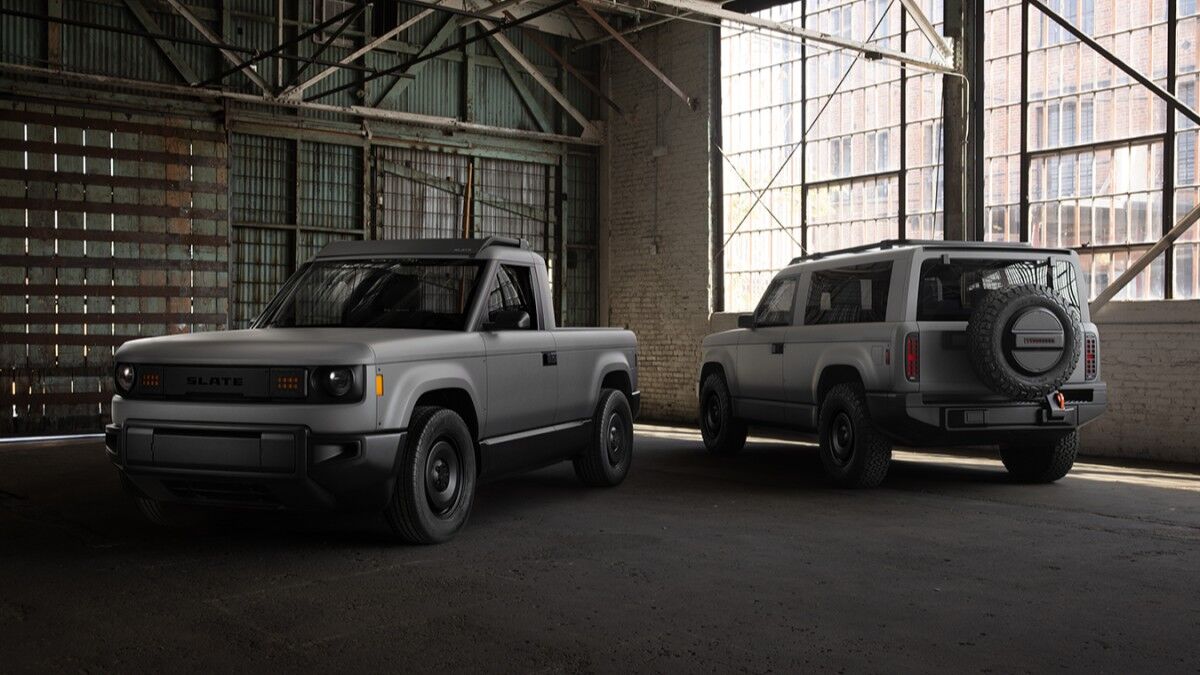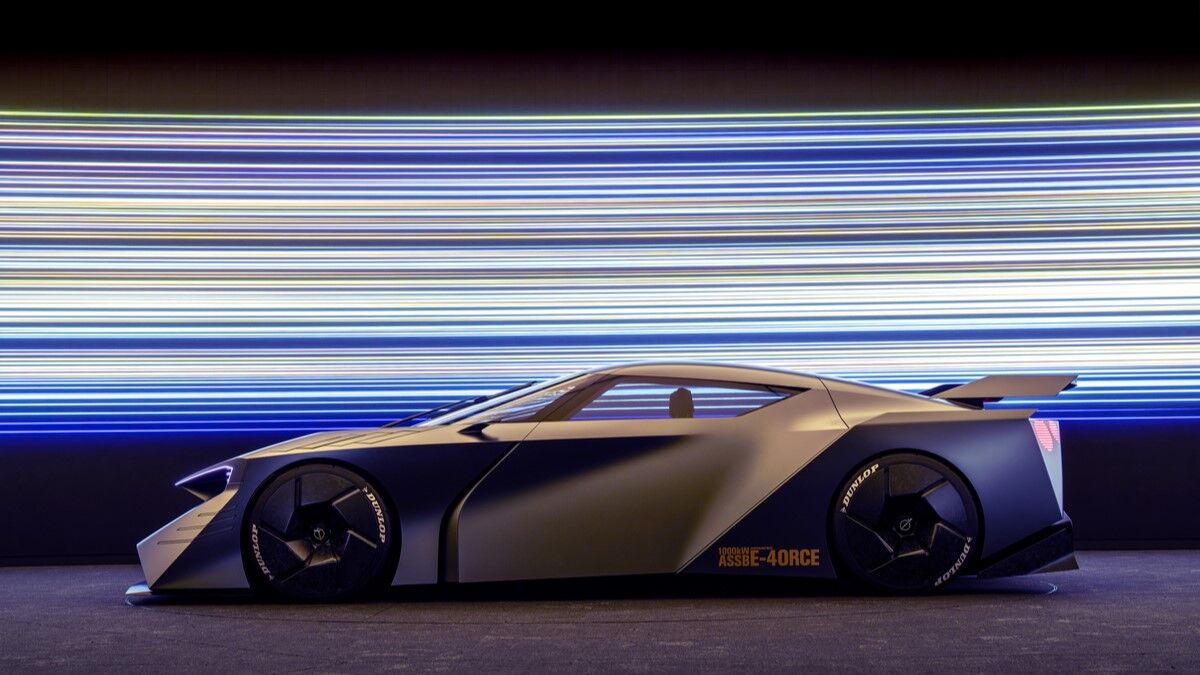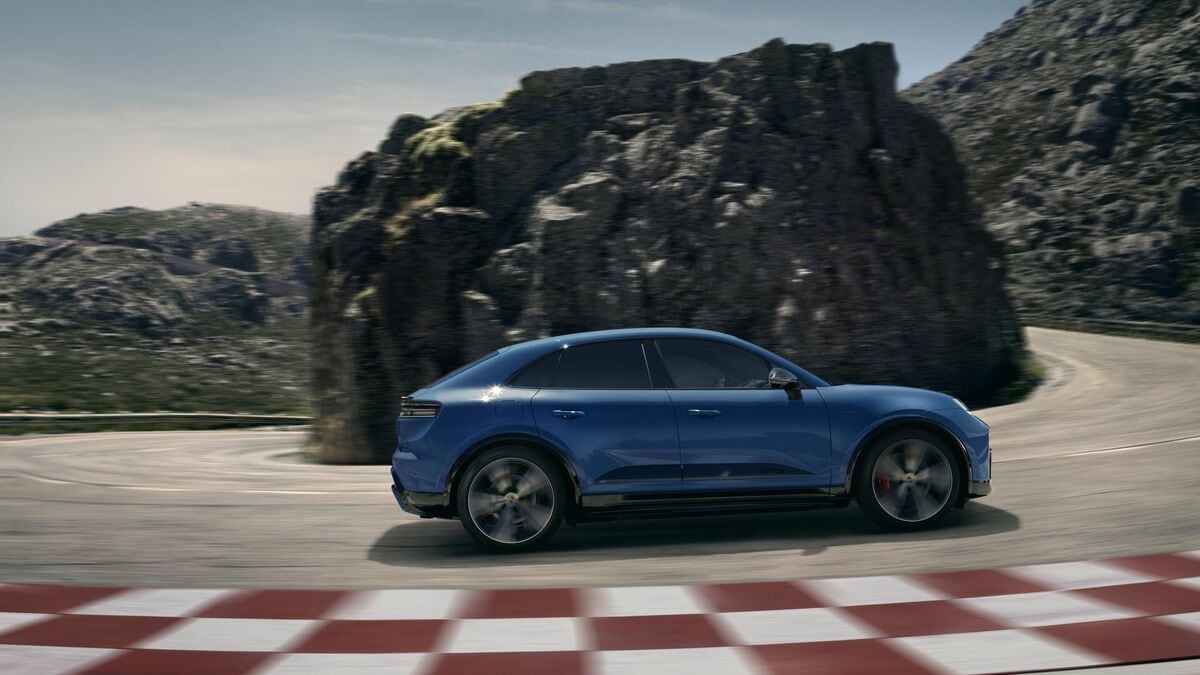The Chevrolet Blazer EV and Ford Mustang Mach-E are compact, midsize electric SUVs that ride a fine line between practicality and sportiness. The Blazer EV borrows inspiration from the recently discontinued Camaro muscle car for its athletic styling. Continuing a rivalry as old as time, this Chevy’s chief competitor comes from the Blue Oval. The Ford Mustang Mach-E that came out in 2021 isn’t about to sit back and let this electron-chewing newbie steal the show. The Mach-E’s expansive powertrain options can be tailored to maximize comfort and driving range or rapid acceleration and passing power.
Let’s explore some of the highlights of the Blazer EV and Mustang Mach-E.
2025 Chevrolet Blazer EV
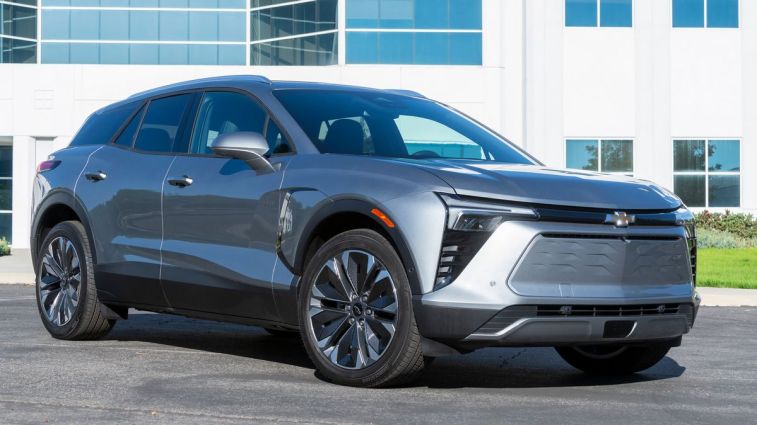
The 2025 Chevy Blazer EV’s eye-catching shape and lengthy roster of available tech and comfort features make it a desirable entry in the growing world of electric SUVs. With seating for five and upwards of 615 horsepower in its new SS trim, the Blazer EV is sporty and practical with little compromise. Pricing starts at $45,995.
Chevrolet Blazer EV Highlights
Blazer EV SS: This marks the first time Chevrolet applies its storied Super Sport, or SS, badge to an electric vehicle. New for 2025, the all-wheel-drive (AWD) Blazer EV SS packs quite a punch: 615 total hp and 650 lb-ft of torque. Chevrolet says this enables the Blazer EV SS to hit 60 mph in less than four seconds when Wide Open Watts (WOW) mode is engaged.
Mechanical variety: The Chevy Blazer EV has the unique distinction of being the only vehicle in America you can get with front-wheel drive (FWD), rear-wheel drive (RWD), or all-wheel drive. The variety continues with multiple configurations available for motors and batteries, giving you just about any balance of range and performance you could want in an electric SUV.
Driving range: The Chevy Blazer EV achieves a maximum range of up to 334 miles on a full charge, which beats the Mustang Mach-E’s best range rating of up to 320 miles.
Read our Chevrolet Blazer EV Expert Review or see 2025 Chevrolet Blazer EV models for sale near you.
2025 Ford Mustang Mach-E
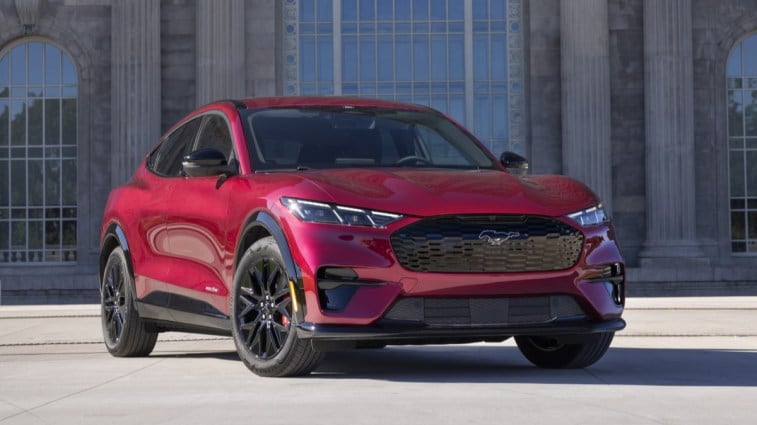
The Ford Mustang Mach-E continues to provide a little something for all types of EV shoppers. In standard trim, this electric Ford is comfortable, spacious, and practical with its rear liftgate and roomy cargo area. Upper trims, such as the GT and GT Performance Edition, are similarly user-friendly but much more potent, thanks to their sport-tuned powertrains. Pricing starts at $38,490.
Ford Mustang Mach-E Highlights
Performance models: Living up to the Mustang name, the GT trim of this EV produces up to 480 hp and 700 lb-ft of torque, sprinting from zero-to-60 mph in as little as 3.3 seconds. In addition to the GT, the Mach-E has an off-road-inspired Rally model with a slight suspension lift, chunkier tires, a rugged appearance package, and the same 700 lb-ft torque rating as the GT with the Performance Package. Going fast off-road has kind of become Ford’s thing (see Raptor).
Efficiency: The Chevy Blazer EV has a longer maximum range than the Ford Mustang Mach-E, but the Ford uses electrons more efficiently. Going farther on less electric fuel translates to lower fuel costs than the Chevy by as much as $100 per year, according to EPA estimates.
Wireless smartphone connectivity: GM has made the controversial decision to phase out Android Auto and Apple CarPlay from its EVs. If these are must-have features, you’ll be glad that they’re standard in the Ford Mustang Mach-E. In addition to wireless Android Auto and Apple CarPlay, the Ford comes standard with a 15.5-inch touchscreen, wireless charging, and navigation.
Read our Ford Mustang Mach-E Expert Review or see 2025 Ford Mustang Mach-E models for sale near you.
Similarities
There is plenty of overlap with the Chevy Blazer EV and Mustang Mach-E. Both are available with all-wheel drive, have a maximum range of more than 300 miles, and have high-performance trims offering wildly quick acceleration. They also have roomy 5-seat cabins with plenty of headroom and legroom.
Pricing
The Kelley Blue Book Fair Purchase Price for any individual used vehicle can vary greatly according to mileage, condition, location, and other factors. The prices here reflect what buyers are currently paying for New 2025 Chevrolet Blazer EV vehicles and New 2025 Ford Mustang MACH-E vehicles in typical condition when purchasing from a dealership. These prices are updated weekly. The manufacturer’s suggested retail price (MSRP) quoted includes the destination fee, but does not include tax, license, document fees, and options.
| 2025 Chevrolet Blazer EV | 2025 Ford Mustang Mach-E | |
| Popular Powertrains | ||
| Engine | Single electric motor | Single electric motor |
| Horsepower | 220 hp | 264 hp |
| Torque | 243 lb-ft | 387 lb-ft |
| Transmission | 1-speed (FWD) | 1-speed (RWD) |
| Fuel Economy | 106 MPGe city/85 MPGe hwy/95 MPGe combined (RWD) | 111 MPGe city/100 MPGe hwy/106 MPGe combined (RWD) |
| Max Range | 334 miles (FWD) | 320 miles (RWD) |
| Also Available | Dual electric motors, RWD, AWD, up to 615 hp/650 lb-ft | Dual electric motors, AWD, up to 480 hp/700 lb-ft |
| Specs | ||
| Basic Warranty | 3 years/36,000 miles | 3 years/36,000 miles |
| Powertrain Warranty | 8 years/100,000 miles | 8 years/100,000 miles |
| NHTSA Overall Safety | 5-Star | 5-Star |
| Max Seating Capacity | 5 | 5 |
| Wheelbase | 121.8 inches | 117.5 inches |
| Overall Length | 192.2 inches | 185.6 inches |
| Width | 78 inches | 74.1 inches |
| Height | 65 inches | 64 inches |
| Turning Diameter | 39.7 feet | 38.1 feet |
| Headroom, Front | 40.9 inches | 38.9 inches |
| Headroom, Rear | 38.1 inches | 38.2 inches |
| Legroom, Front | 44.2 inches | 43.3 inches |
| Legroom, Rear | 38.9 inches | 38.1 inches |
| Shoulder Room, Front | 58.7 inches | 57.6 inches |
| Shoulder Room, Rear | 58.3 inches | 55.9 inches |
| Cargo Volume | 25.5/59.1 cubic feet | 29.7/59.7 cubic feet |
Conclusion
These electric SUVs are similar in many ways, like interior space, range, and performance. Getting into the finer details, the Blazer EV has more variety in its model range and a higher maximum range rating. However, the Mustang Mach-E has wireless smartphone connectivity features the Chevy doesn’t have, lower charging costs, and a lower starting price, so the Ford is arguably the value choice here. At the end of the day, they’re similar enough that you should test drive both and go with the one that speaks to you.






